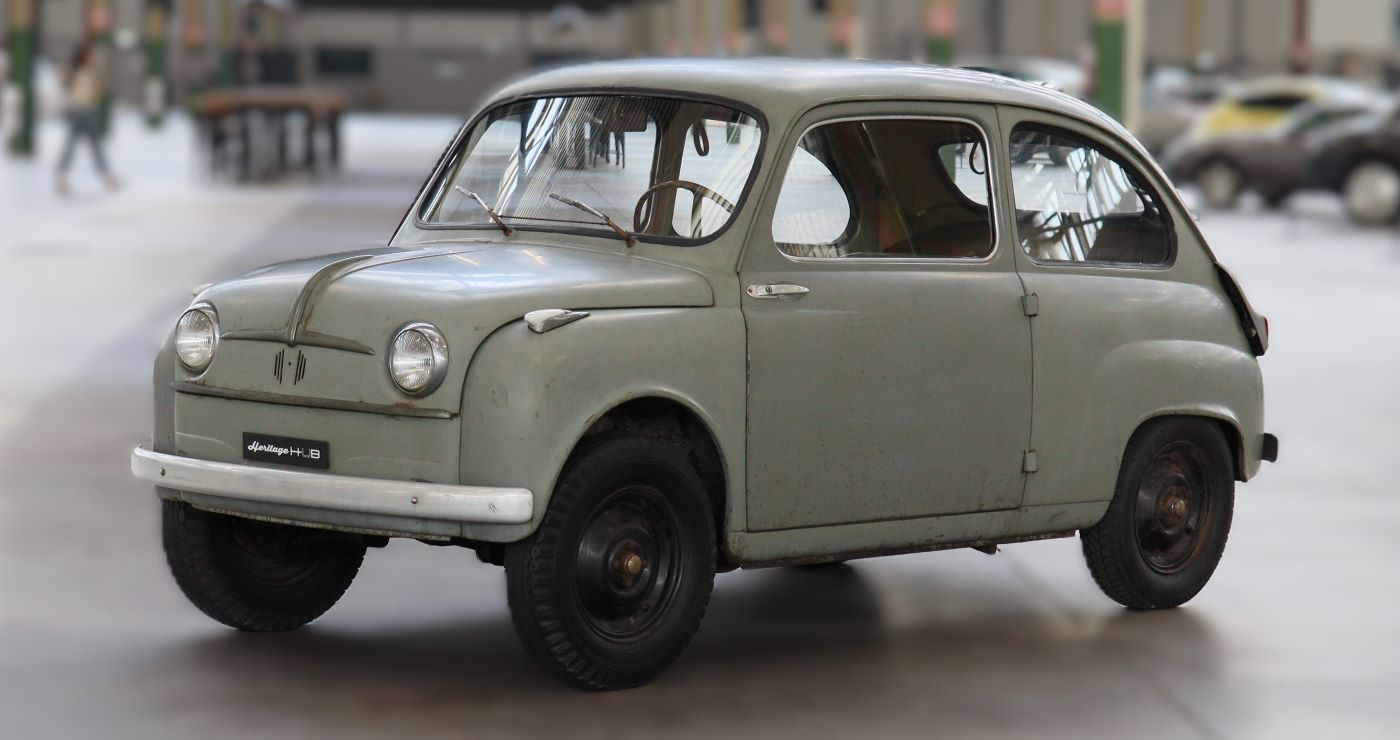
The model on display is the sole survivor of the five unique prototypes built between 1952 and 1954 as part of the Project 100, which would lead to the creation of the legendary Fiat 600. In 1952, as head of engineering, Giacosa was entrusted with the task of designing a vehicle which was capable of putting post-War Italy on the road. It needed to comfortably seat four people, include enough space for baggage, and within a family’s reach. Its design called for a weight of 450 kg and a cruising speed of no lower than 85 km/h.
After evaluating various alternatives, Giacosa opted for a simpler and cheaper solution that included a rear engine and traction. Since keeping weight down was essential to controlling costs, a loading-bearing body was chosen to enclose the cabin and engine compartment, which was designed ad hoc with a smaller size and an air-cooled 570 cm3, 2-cylinder V engine. The die-cast aluminum bodies of the rear headlights also acted as air vents. A single camshaft controlled the rocker arms and operated a side-valve configuration. Interestingly, the prototype also completely lacked a clutch pedal. The aim was to create a vehicle that was extremely intuitive, easy to drive, and affordable.
Unfortunately, it proved rather difficult to move the gearshift and three speeds were not enough for a 600 cm3 vehicle. After a brief trial period, Giacosa recognized that this solution would require several more years of development and technical refinement. Consequently, he decided to replace the powertrain with a more conventional setup featuring a water-cooled, inline four-cylinder engine paired with a four-speed gearbox—one that would go on to become a classic in the years that followed. Once testing was finished, the prototype was never again used. Today, it is on display as part of the permanent exhibition of the Stellantis Heritage Hub in Turin.

You must be logged in to post a comment.